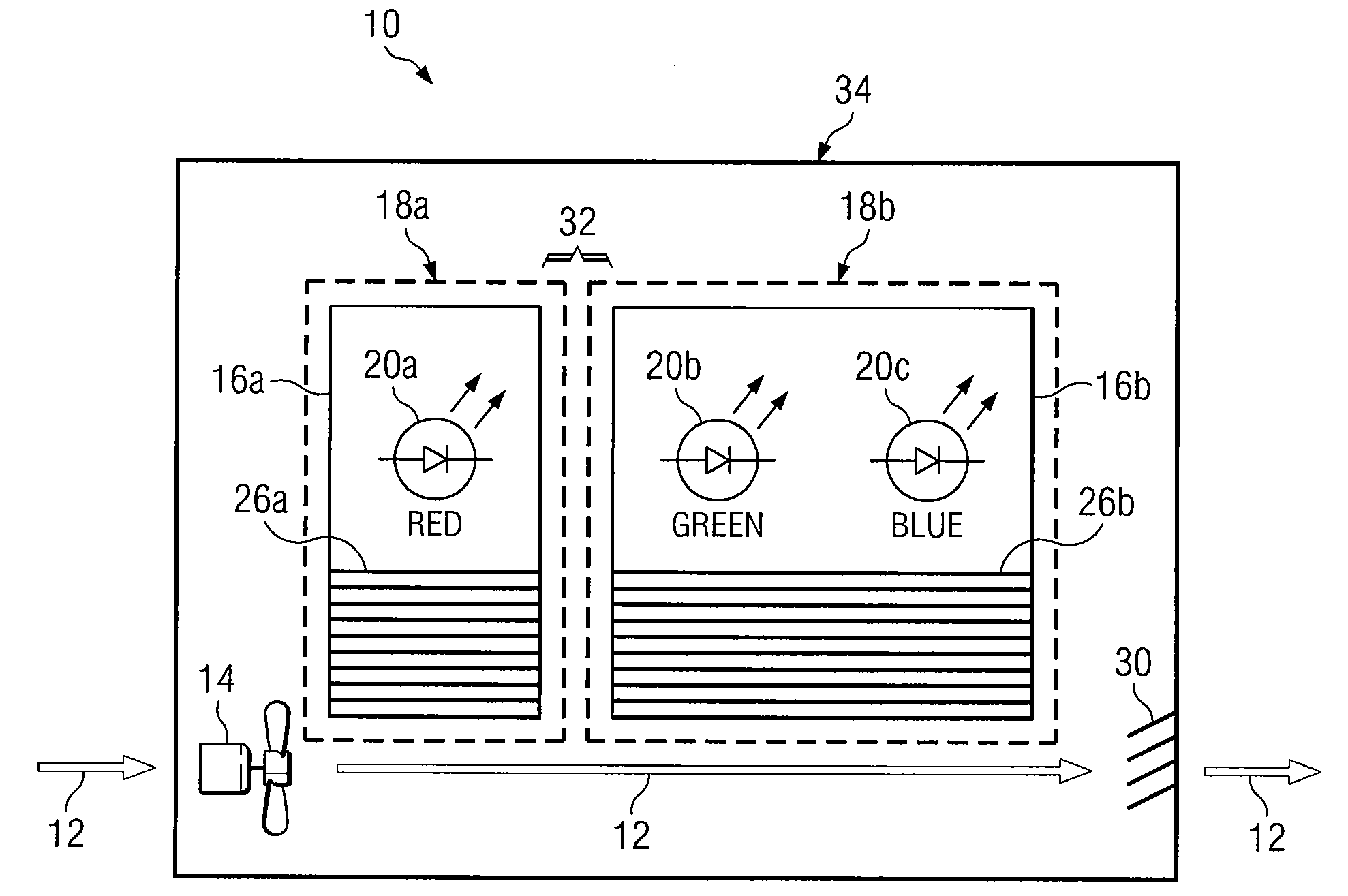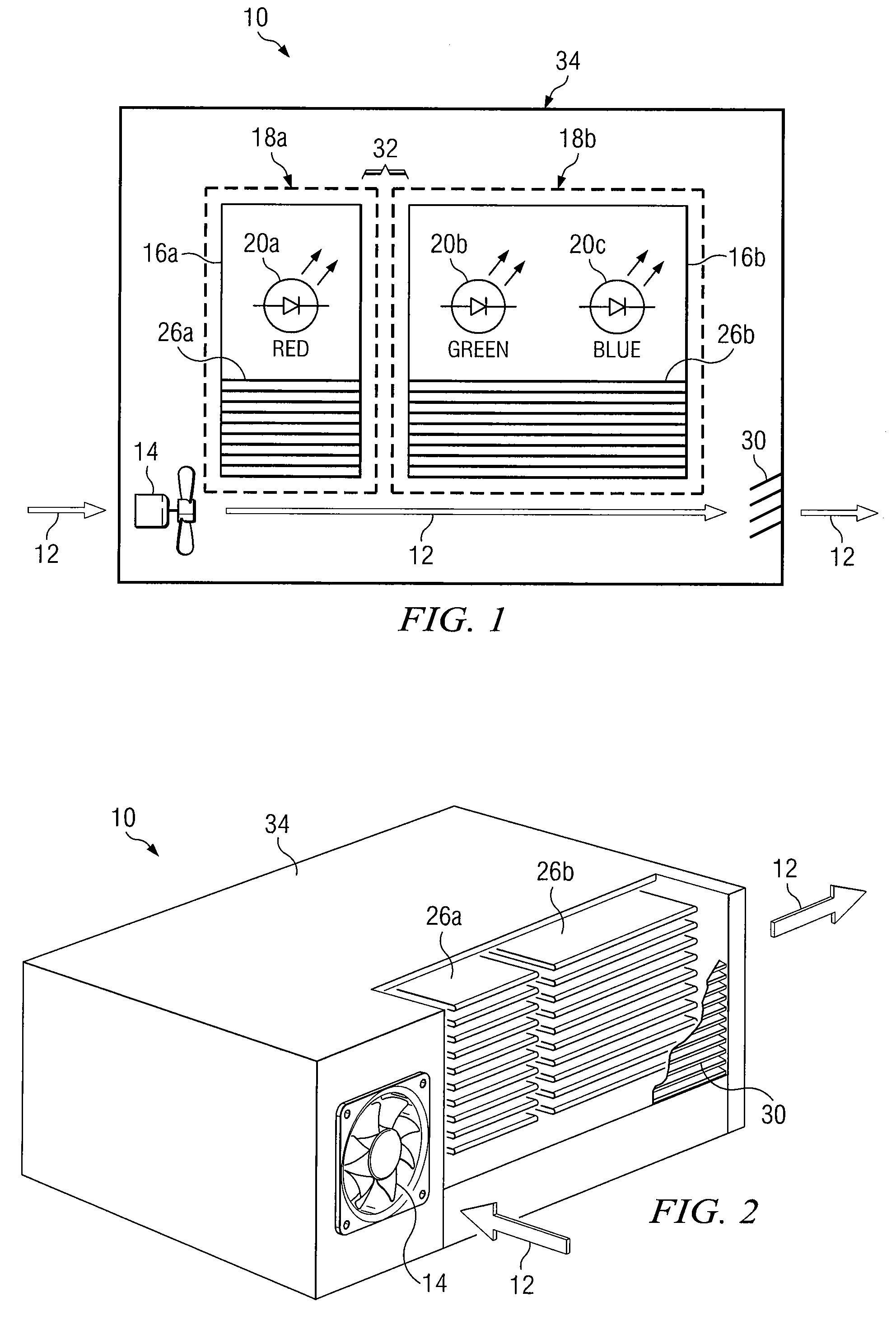Heat Sinks for Cooling LEDS in Projectors
a technology of heat sinks and projectors, which is applied in the field of image projectors, can solve the problems of not providing sufficient intensity and/or reliability of leds, controlling junction temperatures, etc., and achieve the effect of reducing the disadvantages and eliminating the problems of controlling the junction temperatures of light emitting diodes (leds)
- Summary
- Abstract
- Description
- Claims
- Application Information
AI Technical Summary
Benefits of technology
Problems solved by technology
Method used
Image
Examples
Embodiment Construction
[0014]Example embodiments of the invention are best understood by referring to FIGS. 1 through 4 of the drawings, like numerals being used for like and corresponding parts of the various drawings.
[0015]FIG. 1 is a block diagram illustrating an embodiment of an image projector 10. In the illustrated embodiment, projector 10 includes thermal subsystems 18 (18a, b). First thermal subsystem 18a includes one or more first light sources 20a (“light emitters” or “LEDs”) and one or more first heat dissipation units 26a (or “heat sinks”) coupled to a first circuit board 16a. First light source 20a is thermally coupled to first heat dissipation unit 26a. Second thermal subsystem 18b includes one or more second light sources 20b, 20c and one or more second heat dissipation units 26b coupled to a second circuit board 16b. Second light sources 20b, 20c are thermally coupled to second heat dissipation unit 26b. An air gap 32 is located between first thermal subsystem 18a and second thermal subsys...
PUM
 Login to View More
Login to View More Abstract
Description
Claims
Application Information
 Login to View More
Login to View More - R&D
- Intellectual Property
- Life Sciences
- Materials
- Tech Scout
- Unparalleled Data Quality
- Higher Quality Content
- 60% Fewer Hallucinations
Browse by: Latest US Patents, China's latest patents, Technical Efficacy Thesaurus, Application Domain, Technology Topic, Popular Technical Reports.
© 2025 PatSnap. All rights reserved.Legal|Privacy policy|Modern Slavery Act Transparency Statement|Sitemap|About US| Contact US: help@patsnap.com



